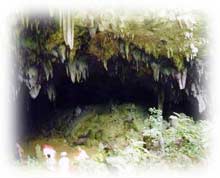
|
NextGen Day - Philippine Travel - Negros Oriental Guide and Travel Information |
|
NEGROS ORIENTAL TRAVEL INFORMATIONWhere to Stay in Negros Oriental
| Description | History Negros Oriental - Whale And Dolphin Haven
An exhilirating journey awaits at the internationally acclaimed dive site of Apo Island, also home to the Balwarte Rocks and Negros Oriental Marine Conservation Park, all of which are consistent crowd drawers. View playful dolphins and pygmy sperm whales out in Tañon Strait at Bais Bay. Commune with birds and other wildlife at the 400-hectare protected mangrove forest that is the Bird Sanctuary and Mangrove Park. And do stop by to admire Canlaon Volcano, one of the tallest peaks in the Visayas. Negros Oriental offers you the opportunity to commune with nature, undisturbed. The heavens have blessed this province with more than its fair share of nature’s bounty, with a bonus to boot the warmth and the inherent charm of the Oriental Negrense. LANGUAGE/DIALECT Cebuano, Hiligaynon, and Tagalog. POPULATION 1,126,000, according to the 2000 Census. POLITICAL SUBDIVISIONS The five major cities are Bais, Bayawan, Canlaon, Tanjay, and Dumaguete (the capital). Situated on the plains of the southeastern coast, Dumaguete City is bounded on the north by the municipality of Sibulan, on the west by the Mindanao Sea, Valencia on the southeast, and Bacong on the south. There are 3 congressional districts, 20 municipalities, and 540 barangays.
Legaspi dropped anchor in Bohol and sent his men in a frigate to reconnoiter in the island. A strong current carried the frigate for several days around Buglas. The Spaniards reported seeing many dark-skinned inhabitants, and so they renamed the island 'Negros'. In 1671 Legaspi assigned encomiendas on Negros Island to 13 of his men. In the following year, Augustinian friars began the Christianization of the island. In 1734 Negros was made into a corregimento with its capital in Ilog, located on the western side. In 1795 the island became an alcaldia with Himamaylan as capital, also on the west. In 1856 Negros became a politico-military province with Don Emilio Saravia y Nuñez as the first Gobernador Politico-Militar, and Bacolod, again on the west, as capital. Due to difficulties in administering the far-flung settlements of the island, the Recollect priests petitioned for the division of the island. Thirteen years later, in January, Governor General Valeriano Weyler executed a Royal Decree establishing two separate Negros political units, Negros Occidental on the western side and Negros Oriental on the southeast. Negros Oriental was assigned Dumaguete as capital. Negros Oriental Is Famous For... Sugar Mills Sinulog de Tanjay Apo Island Apo Island Beach Resort, formerly Kan-Upe Cove Resort, is an internationally acclaimed dive site. The 12-hectare island has eight regular and honeymoon cottages. Located in Dauin, it has a hilly terrain and white-pebbled lagoon. Nestled within, the Balwarte Rocks and Negros Oriental Marine Conservation Park, with its spectacular coral gardens and marvelous marine life, are consistent crowd drawers. PNOC Geothermal Power Plant Dolphin and Whale Watching Canlaon Volcano Silliman University Bird Sanctuary and Mangrove Park Apo Island Rockclimbing Where to Stay in Negros Oriental
| Description | History |
Philippine Infrastructure - Philippine Sports & Recreations - Philippine Travel Tips
Getting Around to the Philippines - Philippine Map
People of the Philippines - Culture and Arts - Philippine Religion - Philippine Churches
Philippine Food & Cuisine - Philippine Festivals and Events - Philippine Beaches
Philippine Dive - Philippine Wildlife - Philippine Heritage Sites - Philippine Golf - Philippine Popular Activities
NextGen Day
Hotels | Cruises | Flights | Travel Agents | Tour Operators | Travel and Leisure
Travel Incentive Program / Travel Articles / Travel Recreation & Activities
Travel Updates / Health Tourism / Real Estate Tourism
NextGen Day : Australia, Asia Travel, Africa Travel, Europe Travel, Middle East Travel, USA Travel
 Discover
nature at its freshest in the province that promises the charming surprise
of a lush countryside, a fascinating highland adventure, breathtaking
caves, magnificent lakes, scenic beaches, world-class marine reserves,
alluring dive sites, and even playful dolphins and whales.
Discover
nature at its freshest in the province that promises the charming surprise
of a lush countryside, a fascinating highland adventure, breathtaking
caves, magnificent lakes, scenic beaches, world-class marine reserves,
alluring dive sites, and even playful dolphins and whales.  The
Negritos, Malays, and Chinese have long inhabited the island called
Buglas before the 1565 expedition of Miguel Lopez de Legaspi.
The
Negritos, Malays, and Chinese have long inhabited the island called
Buglas before the 1565 expedition of Miguel Lopez de Legaspi.